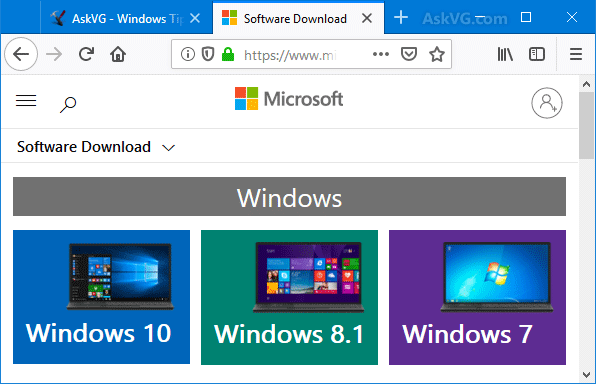If you want to upgrade your existing Windows version to Windows 10, you can mount Windows 10 ISO in Windows Explorer and run Setup.exe file or you can extract ISO file using 7-Zip or other file archive utility and then run Setup.exe file to start the upgrade process.
But if you want to perform a fresh installation of Windows 10 after formatting C: drive, you'll need to create a bootable USB drive for Windows 10 ISO i.e. burn Windows 10 ISO to USB drive, so that you can boot your computer using bootable USB and start Windows 10 installation process.
Today in this article, we are going to share another method to create bootable USB drive for Windows 10 ISO. This method can be used to burn almost all Windows versions ISO to USB drives and make the USB drive bootable.
We'll use a simple software called Rufus to create the bootable USB drive from Windows ISO.
If you also want to create a bootable USB drive for Windows ISO to clean install Windows in your computer, following steps will help you:
STEP 1:
First of all, you'll need offline ISO file of Windows setup. If you already have the ISO file, you can move to STEP 2.
If you don't have Windows ISO file, you can download it using following links:
Direct Download Windows 10 Offline ISO Files (Disc Images)
NOTE:
Sometimes the above mentioned webpage may automatically redirect you to Media Creation Tool download page, if you try to open it on a Windows 7, Windows 8/8.1 or Windows 10 PC. To overcome this issue, you can open the webpage link on a PC having a different operating system such as Windows XP, Windows Vista, Mac OS or any Linux distro. If you open the link in a PC having any OS other than Windows 7 or later, the webpage will not redirect and you'll get the original webpage containing direct download links of Windows 10 offline ISO files. You can also try to open the link in any mobile phone and it'll not redirect.
Also if you are using Google Chrome web browser, press F12 key to open Chrome Developer Tools and then click on small mobile phone icon present near the magnifying glass icon. It'll switch to mobile device mode. Now open the URL link and it'll not redirect.
If you are using Internet Explorer web browser, press F12 key to open Developer Tools and then click on Emulation tab and select "Windows Phone" from "Browser Profile" drop-down box. Now open the URL link and it'll not redirect.
Download Windows 7, Windows 8.1 and Windows 10 Offline ISO Files

STEP 2:
After storing Windows ISO file on your computer, download Rufus tool from following topic:
STEP 3:
Run Rufus and it'll automatically detect the attached USB drive.
Now select "Disk or ISO image" option from drop-down box given under "Boot selection" section and then select downloaded Windows ISO file using "SELECT" button.

If you are going to use the bootable USB drive on a new computer, you can select "GPT" under "Partition scheme" section. If the computer system is old, you should select "MBR" option from drop-down box.
That's it. Click on "START" button and the tool will start creating bootable USB drive for Windows 10 ISO file.
It'll take a few minutes in formatting the drive and copying Windows setup files.
After the process completion, you are ready to use the bootable USB drive in any computer to install Windows 10 or other Windows versions.




![Acronis True Image 2022 Crack With Serial Key Download [Latest]](https://blogger.googleusercontent.com/img/a/AVvXsEg9DY3vAsGzwLllOVIsPHqvpJpy0gDWHu2EZD4hzDYcM-3Shj70Yem9xCtPal6-XhVXjHEuHmJtoy82oHOobHdgE3BXsCbf7SpelmqAWk4EQIDDbd9aYXRB4Wenu_trsXKjufn8voecUfVQ_dEMFyXDxnXvRva0jRVqqY2EyKpkgZ9wKaE0nmL7MkqK=w100)



0 Comments